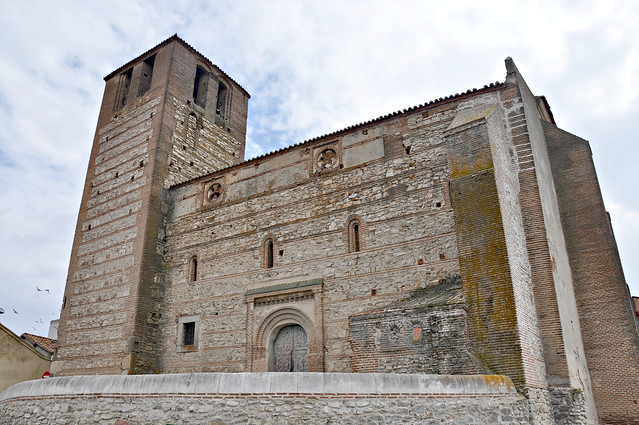
A segunda igreja na nossa rota foi a de San Miguel dedicada ao Arcanjo e ao vê-la por fora com sinais de deterioração tivémos receio do que poderíamos encontrar no seu interior. Foi construída entre os séculos XII e XVI e o seu tamanho impressiona se comparamos que as outras que vimos, também ajuda o facto de estar isolada e não ter edificios contiguos.
The second church on our route was the San Miguel dedicated to the Archangel and seeing it from the outside with signs of deterioration we had fear of what we might find inside. It was built between the twelfth and sixteenth centuries, and its size is impressive if compared to the others we've seen, it also helps the fact of standing alone and not having contiguous buildings.
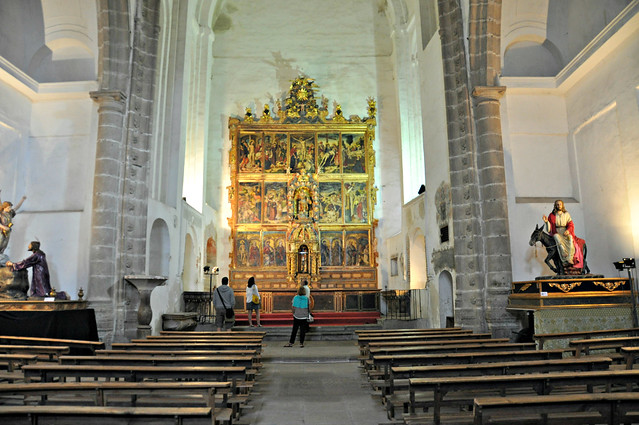
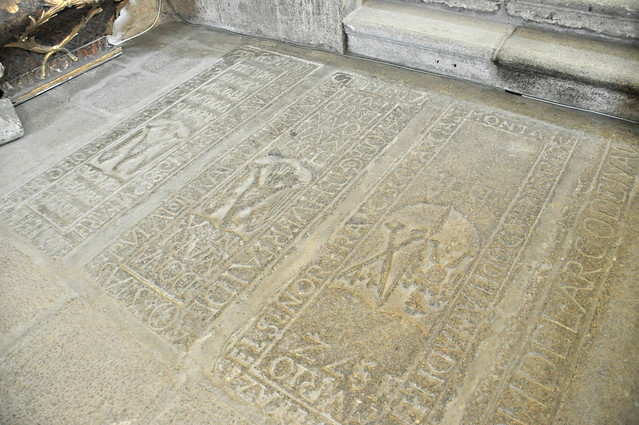
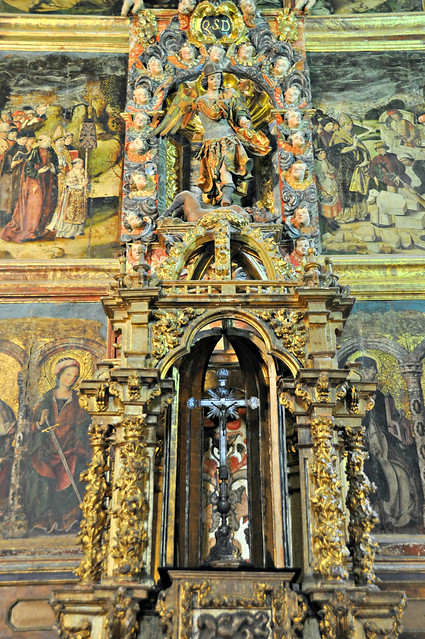
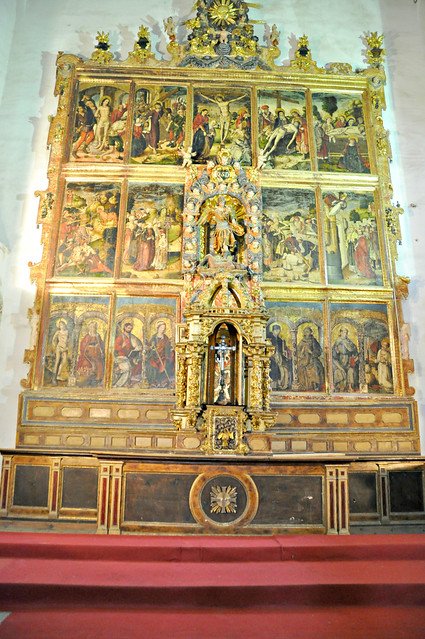
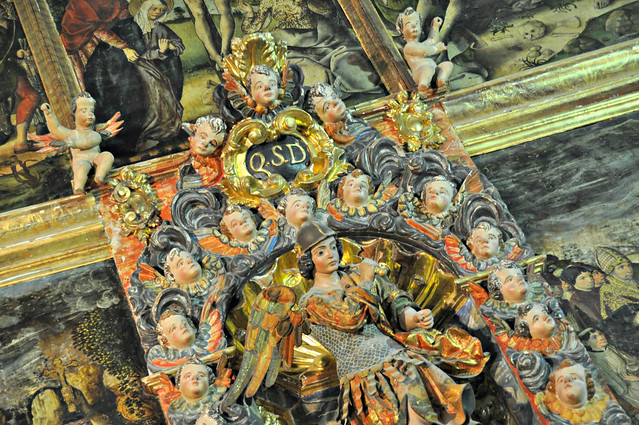
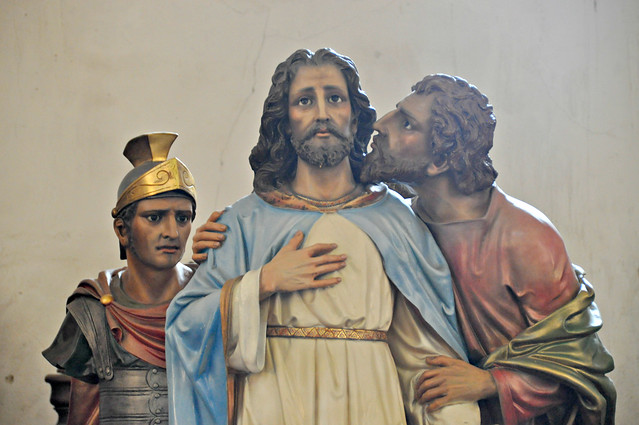
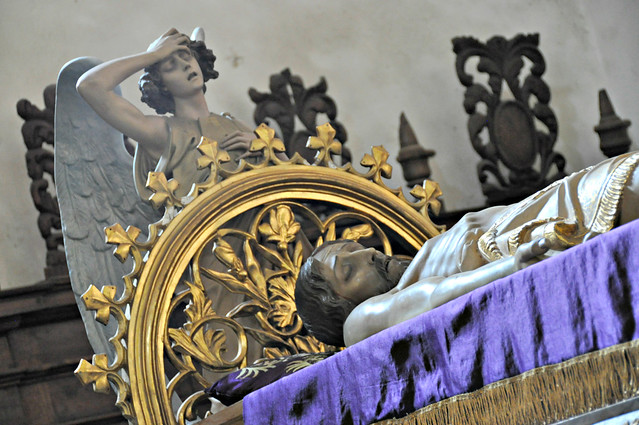
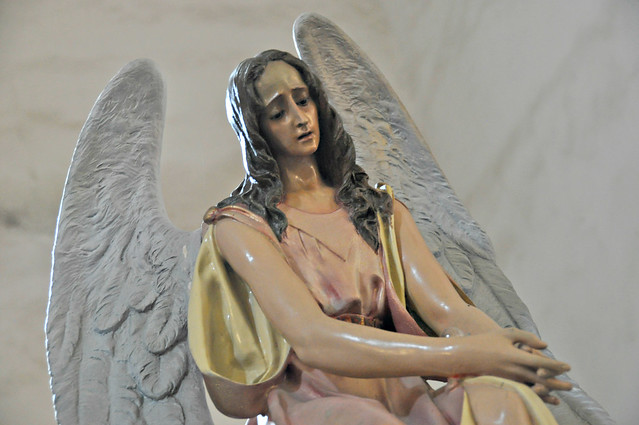
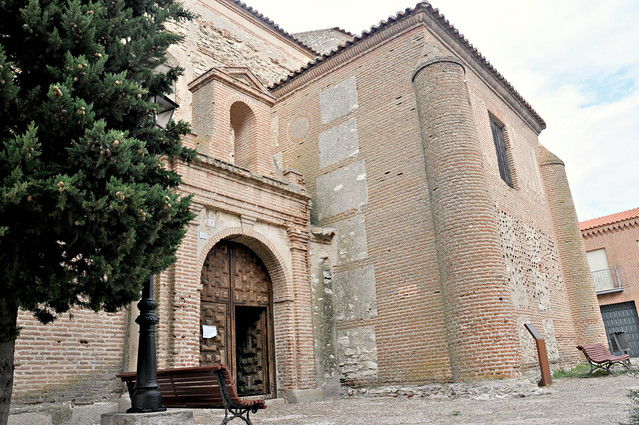

Tal como a primeira que vimos, o seu interior é relativamente simples e o seu retablo no alta-mor é a parte com maior importância. Foi construído no século XVI por Marcos Pinilla sendo o Arcanjo a personagem principal para além de cenas sobre a paixão e a morte de Cristo. No chão e antes de subir ao altar estão as campas dos "Caballeros de Montalvo", responsáveis no século XI por repovoar a cidade de Arévalo.
Ainda no seu interior estavam colocados algumas esculturas utilizadas em procissões, uma das mais impressionantes é a da morte de Jesús e o beijo de Judas que ajudou os romanos a identificar Cristo depois da Última Ceia.
As the first we've seen, the interior is relatively simple and its high altarpiece in the chancel is the part with utmost importance. It was built in the sixteenth century by Mark Pinilla being the Archangel the main character besides the scenes of the Passion and Death of Christ. On the floor and before going to the altar are there the graves of the "Caballeros de Montalvo", responsible in the eleventh century by repopulating the town of Arévalo.
Still inside were placed some sculptures used in processions, one of the most impressive is the death of Jesus and the Judas' kiss that helped the Romans to identify Christ after the Last Supper.
Still inside were placed some sculptures used in processions, one of the most impressive is the death of Jesus and the Judas' kiss that helped the Romans to identify Christ after the Last Supper.








Our guide of:

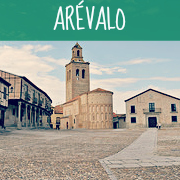
Sem comentários:
Enviar um comentário